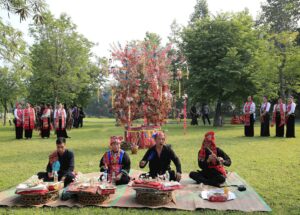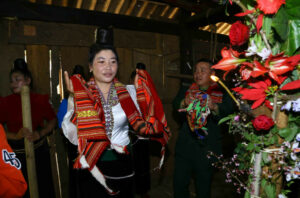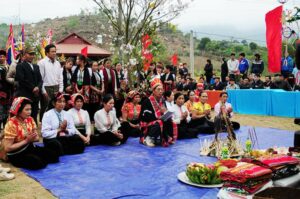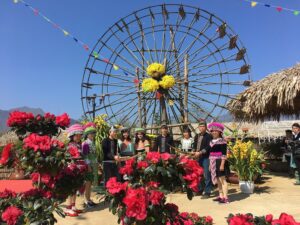Cap Sac Ceremony of The Red Dao People (Sapa District, Lao Cai Province)
The Cap Sac Ceremony of the Red Dao people (Sapa District, Lao Cai Province) is one of the most important and traditional rituals in the cultural heritage of the Dao ethnic group. The Cap Sac Ceremony not only attracts the local Dao people but also draws the interest of many other ethnic groups living in the highlands of Northern Vietnam, as well as visitors from all over.
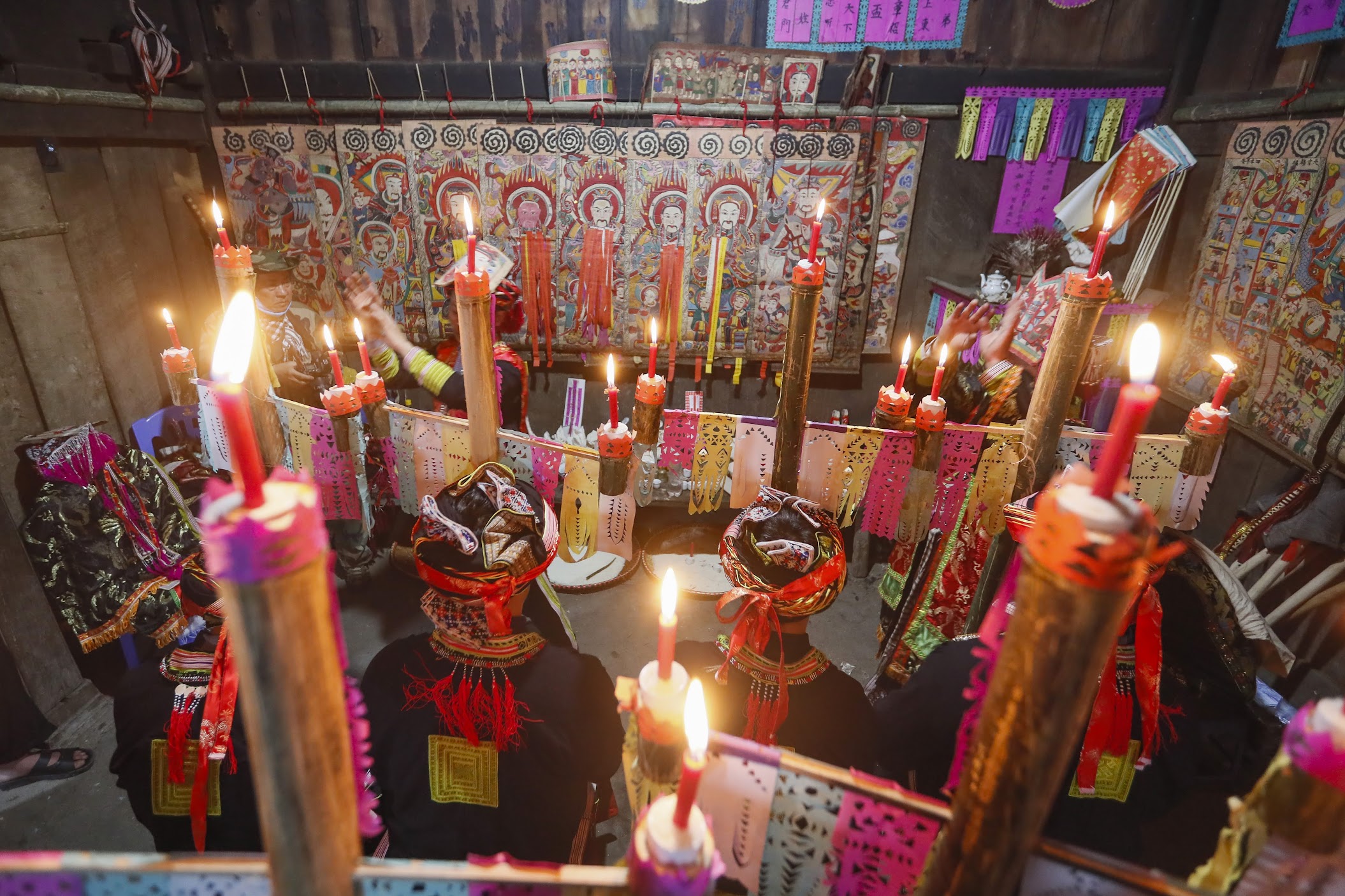
According to the Dao belief, men who have not gone through the Cap Sac ceremony are not considered fully grown. This folk ritual, passed down from ancient times to the present, is particularly significant to the Red Dao community in Sapa, as it symbolizes their aspirations for a prosperous and happy life. The ceremony is held annually in November, December, or January. The Red Dao people can conduct the Cap Sac ceremony for a maximum of 13 individuals in one session, with the number of participants being odd (e.g., 3, 5, 7, etc.).
In the Dao belief system, the Cap Sac ceremony is a compulsory custom for men. Only those who have undergone the ceremony are considered fully grown men and are allowed to participate in important community affairs. If a man has not been initiated, he is still regarded as immature, even if he reaches old age. On the other hand, those who have undergone the ceremony, regardless of their age, are permitted to take part in significant rituals within their family or community.
The Dao people believe that only those who have been initiated in the ceremony possess the wisdom and virtue to distinguish right from wrong in life. They are also deemed capable of becoming beneficial teachers for the community, and they are officially recognized as descendants of Ban Vuong, the Dao people’s ancestor.
The Rituals and Organization of the Cap Sac Ceremony
To prepare for the ceremony, the shaman must cleanse the home of the person being initiated before the day of the ritual. The family head must select an auspicious day and month, and choose a respected shaman to conduct the ceremony. This person should be well-versed in customs and rituals and have the authority to lead the event.
During the Cap Sac ceremony, the order of succession is followed based on family lineage. The first person to undergo the ceremony is typically a married man at the head of the family, and a Red Dao woman with a husband must cover her head with a red cloth throughout the event. The young men seeking initiation must wear a hat and traditional attire, as it is believed that this is where the spirits of the gods reside in the initiated person.
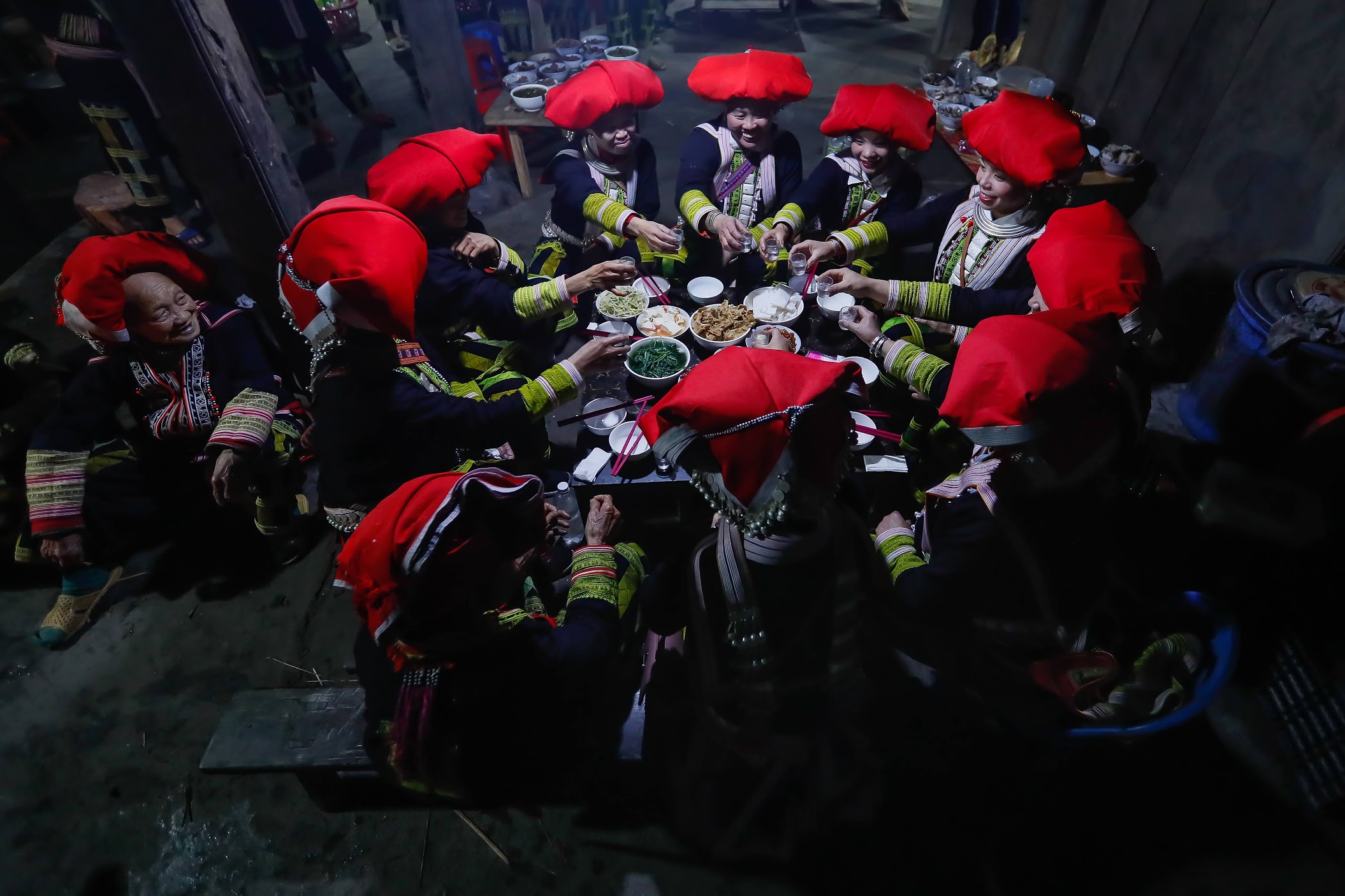
The ceremony begins with the shaman striking a drum to invite the ancestors to attend and inform them of the purpose of the event. The Cap Sac ceremony includes many rituals both inside and outside the house. Inside, a ritual of transferring power takes place through ancient Dao texts, along with ceremonial items such as candles, mats, seals, staffs, dice, and rice bags.
The Cap Sac ceremony consists of two main parts: the Qua Tang (crossing the light) ceremony, which includes the following rituals: Presentation, lighting the lamp, lowering the lamp, assigning a name, and crossing the bridge. The second part is the Tau Slai (promotion) ceremony, which involves rituals like lighting the lamp, placing the hat, presenting to the Jade Emperor, the red thread ritual, and visiting the celestial court. The level of initiation varies, and the number of spiritual soldiers assigned to the husband and wife also differs depending on the level.
The first level is the initiation with 3 lights, where the husband receives 36 spiritual soldiers, and the wife receives 24. The highest level is the 12-light initiation, where the husband receives 120 spiritual soldiers, and the wife receives 60. The ceremony usually lasts from one to five days and includes rituals such as presentation, the family head sacrificing a pig and chicken to honor the ancestors. Each level has its own distinct rituals with historical and cultural meanings.
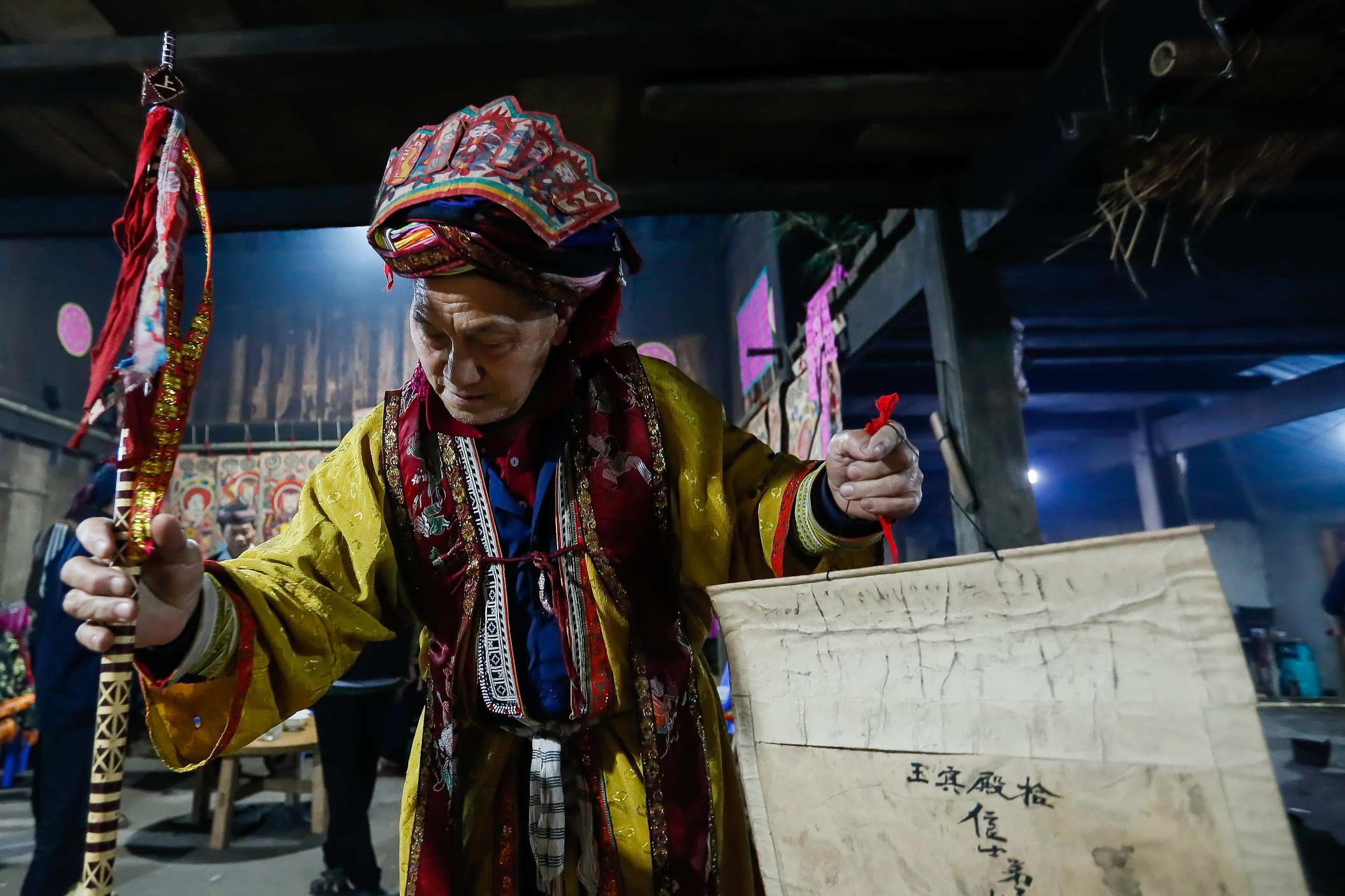
For the grand 12-light initiation, which is the highest rank, 12 main shamans and several assistant shamans are involved. Each shaman has a specific role, but their common goal is to transmit all their knowledge, spiritual soldiers, and ethics to their students.
The initiates must undergo a process of self-learning and practice, mastering the rituals, procedures, and prayers recorded in Dao texts. Those who are initiated at the 12-light level are highly respected in the community and become “masters,” capable of leading important ceremonies for the village.
The ceremony begins with a greeting ritual for the Chip Sai Tia (master shaman), a ceremony that shows the students’ respect for the shamans conducting the Cap Sac. This is followed by a ritual to invite the ancestors and deities to witness the ceremony. Offerings such as pork, rice, and wine are presented, and the rituals for the initiates, as well as other ceremonies, proceed according to the shaman’s prescribed order. These include dances to invite the Jade Emperor to witness, presentations to the ancestors, and requests to hang small paintings.
Another significant ritual is welcoming the master to initiate, transmit power, and issue certificates. During the “welcoming the father” ceremony, 12 main shamans and 6 of their disciples are invited, with the highest-ranking shaman being greeted first, followed by the others in descending order of rank.

Before the ceremony begins, the shaman will perform a ritual to ask the deities to confirm the initiate’s status as a fully grown individual. At the end of the ceremony, prayers for the initiate’s good fortune are written on paper, wrapped up, and burned.
Besides the formal rituals, the Cap Sac Ceremony also includes a festival with various folk arts, including music, sacred songs, performances, dances, and rituals, which express religious and spiritual purposes. These performances reflect historical and cultural content, creating a lively atmosphere that draws participation from people in local villages.

The Cap Sac ceremony of the Red Dao people is considered one of the most important and traditional activities in their cultural heritage. It carries significant humanistic values, offering education on traditions, and helping people understand their responsibilities towards their families and society. The moral teachings recorded in the initiation texts emphasize the importance of avoiding bad deeds and doing good.
This ritual helps preserve and promote the traditional cultural values of the Red Dao people, contributing to the rich and diverse cultural tapestry of the 54 ethnic groups in Vietnam.
